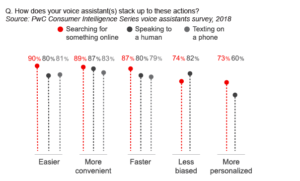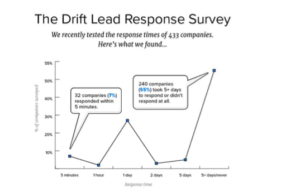How AI is Benefitting Retailers in 2019: From $340bn in Annual Savings to Record Lead Qualifications and Conversions

Artificial Intelligence’s (AI) influence on the world of retail continues to snowball. As early as 2023, it’s predicted that the total spend on retail machine learning will reach $12 billion.
But money spent hasn’t outmatched money made: 49% of retail businesses say AI has helped them save.Capgemini predicts that AI could save retailers over $340 billion annually by 2022.
Beyond the greater cost benefits, what other benefits can AI offer retailers in 2019? We explore, below.
H2 The World of Hyper-Personalization
Thanks to the rise of predictive algorithms, the Amazon-ization of the consumer means that customers now expect retailers to intuitively and instantaneously meet their needs and desires.
AI has also enabled greater personalization of the customer experience, enabling retailers to accurately capture consumer data and develop detailed personal insights into the interests, needs, and behaviors of each individual customer. Sephora’s AI-based Lip IQ scans shoppers’ faces to help them find their lipstick match. Moreover, AI-enabled forecasting is also driving customer engagement with predictive recommendations across e-commerce platforms.
Hyper-personalization cost-effectively tailors the shopping experience to meet the needs of each individual customer, as opposed to the over-generalized segments traditionally used in the industry.
And the data shows the personalization delivers. When consumers expectations for a personalized shopping experience are met, 44% are likely to become repeat buyers.In addition, 49% are more likely to make an impulse purchase, while 40% opt for the more expensive purchase.
H2 “Alexa, order my favorite….”

Current trends are also seeing voice ordering skyrocket. From ordering items to finding them on the shelves, AI-powered personal assistants support a smoother customer experience.
Amazon’s death-vice grip on the industry continues to hold in the voice ordering space, with Alexa saving both consumers and the corporate giant money and time with every product ordered. Starbucks are also improving the customer experience with voice ordering. Customers can now use the Starbucks app to order their coffee and re-order their tried-and-true favorites.

Screenshot from PwC.
In addition, consumers now perceive voice assistants as the fastest, easiest, and most convenient way to perform tasks online, and over 50% now use voice assist to order products online. On average, 80% of consumers who use their voice assistant to shop are satisfied.
H2 How AI is Helping Retailers Capture and Convert New Leads
No matter where a lead is positioned within the sales funnel, AI can help. Chatbots are more frequently being employed by retailers to meet user inquiries – allowing retailers to respond to leads within the coveted 5-minute window required to successfully qualify leads and convert them into paying customers.
Without the assistance of AI, retail staff often fail to successfully respond to leads within this timeframe. Currently, only 7% of businesses are meeting this standard. As Vendasta note, sales conversions are 391% higher in the first minute– something that’s difficult to imagine without the use of AI technology.

Screenshot from Drift.
In a survey of 433 companies, Drift found that every one of the companies with the 10 fastest response times used AI-powered chatbots to capture leads. From H&M to Sephora, many of the leading retailers now use AI-powered chatbots on their website.
H2 Is There a Darkside to the Rise of AI in Retail?
Despite these benefits, conversations still whirl about the dark side of bringing AI to the forefront of retail. As with the threat to jobs that AI poses to the vast majority of modern-day industries, it’s predicted that roughly 60%of retail staff will lose their jobs to AI over the next 20 years. Ethical questions arise as we ‘sacrifice’ workers in the name of efficiency and slashing costs.
But the underbelly of AI isn’t just limited to job loss, from the datasets used to train AI to coding, data scientists come with their own biases that can adversely impact the machine learning process. The majority of AI is currently developed by white men and this bias continues to creep its way into the ‘minds’ of the AI powering retail.
For example, the backlash surrounding Apple’s FaceID failure to recognize people from certain minority backgrounds highlights the inherent biases in AI development. Back inside the store, this can lead to the alienation of customers. While research is underway to address issues of bias, and algorithms have been developed to help mitigate the problem, often deep-rooted discrimination can be difficult to address.

In addition, many consumers are skeptical about AI in retail, with many demanding greater privacy protections and transparency from retailers. Retail businesses need to address consumer concerns as well as drive forward with innovation.
While it can be tempting to get lost in the pink cloud of exciting AI innovations and all they promise for retail, continuing to engage with customers about what they really think is key to maintaining trust and engagement.
H2 The Impact of AI on Retail
Online and in-store, AI is offering retailers innovative ways to draw in new consumers and retain the loyalty of current ones. Despite the growing reservations on the increasing use of AI in the retail market, AI continues to outmatch the benefits offered by the old ways of doing business.